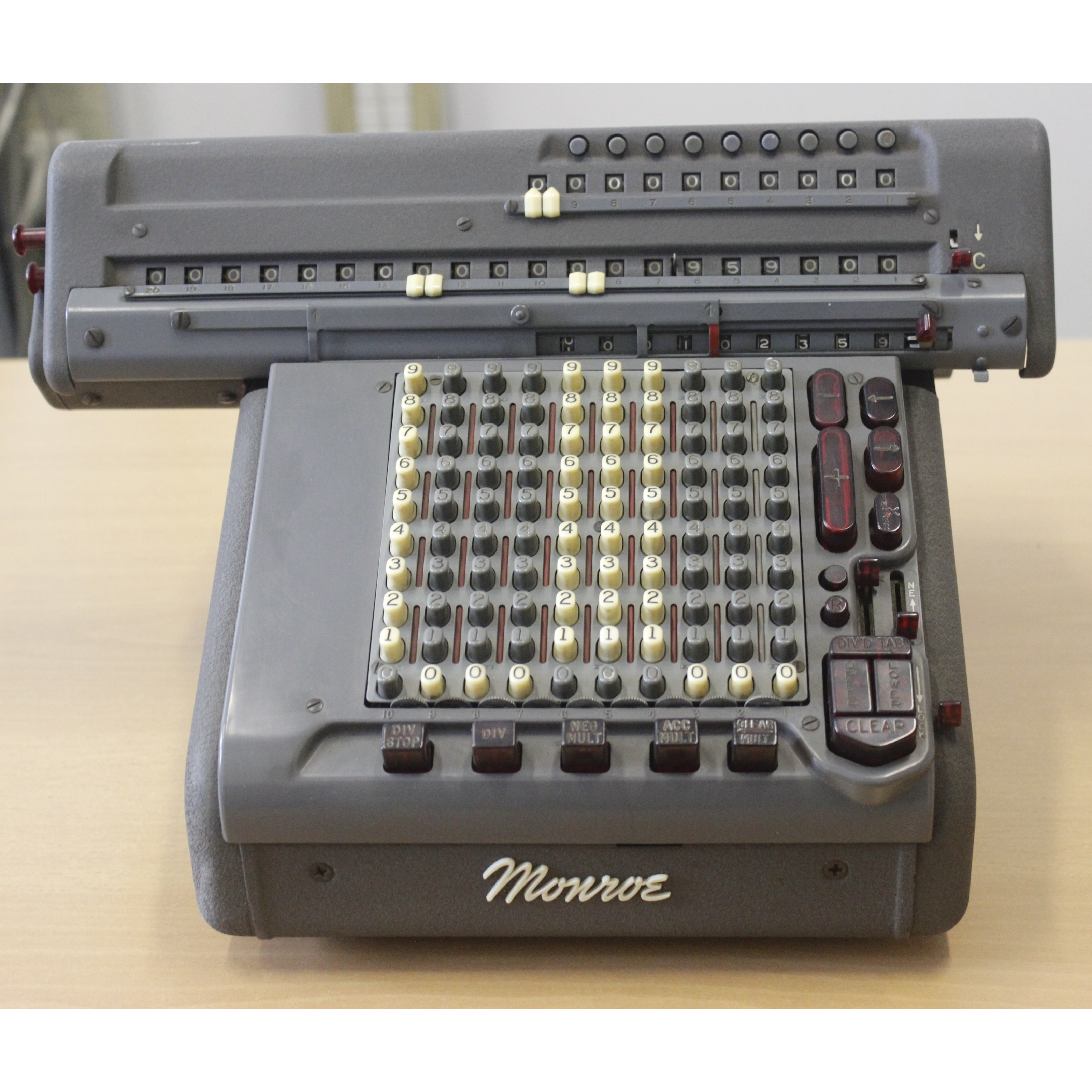
The MONROmatic electromechanical calculator is a desktop instrument, equipped with a keyboard, capable of performing mathematical calculations using electromechanical devices. It was produced by the firm "Monroe Calculating Machine Company", which was among the first companies to introduce on the market calculators equipped with keyboard, with progressively protruding rods, instead of lever systems.
Insights - Fun facts
The "MONROE CALCULATING MACHINE COMPANY" was an American company of adding machines and calculators founded in 1912 by Jay Randolph Monroe (1883-1937) on a project by Frank Stephen Baldwin (1838-1925), of which he had acquired the patent.
A Monroe machine has a keyboard with 8 columns of keys. Each column has 10 keys, numbered from 0 to 9. When you press a key to select a digit, the key remains pressed. If you press a second key in the same column, the first key is displayed again, so that you can select, at most, a single digit in a column.
Dopo aver inserito un numero in questo modo, è possibile ruotare la manovella a destra della macchina. Girando la manovella in senso orario si aggiunge il numero selezionato al registro, e ruotandolo nell’altro senso lo si sottrae.
On an electrically operated model you must press the Plus (+) or Minus (-) button to activate the engine instead of turning a crank.
Alla destra della tastiera ci sono tre pulsanti. Quello più grande è etichettato “Clear” e cancella il numero selezionato dalla tastiera, disinserendo tutti i pulsanti premuti. Gli altri due pulsanti sono contrassegnati come “Repeat” e “Non-Repeat”, e quando uno di essi viene premuto, l’altro si disinserisce. Quando è selezionato “Non-Repeat”, la scelta precedente verrà cancellata automaticamente al termine della rotazione della manovella. Quando viene selezionato “Repeat” ciò non accade, quindi è possibile ruotare ripetutamente la manovella per aggiungere il numero selezionato al registro più volte.
The register, usually 16 digits long, is located on a cart at the back of the machine, like a standard typewriter. The carriage can be moved to the left or right by rotating a handle on the front of the machine. This allows you to add the selected number to the register 10 times every turn of the crank, and by moving the carriage again you can add 100 times the selected number, and so on. This makes it easy to multiply.
It should be noted that the carriages are managed by a rotating mechanism in the body of the machine that drives the register. This means that if the cart is moved to the left and protrudes, the log digits in that part of the cart will not be updated by one turn of the crank, and only the digits aligned with the keyboard will be updated together with one or two additional digits to the left . In use, this rarely becomes a problem.
The cart also has a second smaller register that acts as a counter. Each time the crank is rotated to add a number, the counter increments the digit aligned with the right column of the keyboard. If you subtract a number, the figure will be decreased. The figures shown can be values from 0 to 9 displayed in black, but when a figure is decremented below zero, it will be displayed as a red digit from 1 to 9 to represent from -1 to -9.
A clockwise rotation of the handle on the right of the trolley will cancel the counter and a counter-clockwise turn will cancel the register.
Technical Data Sheet
Name of the asset: MONROmatic CAA-10
Category: mechanical calculator
Manufacturer: Monroe Calculating Machine Company
Country of production: USA
Year of production: 1954